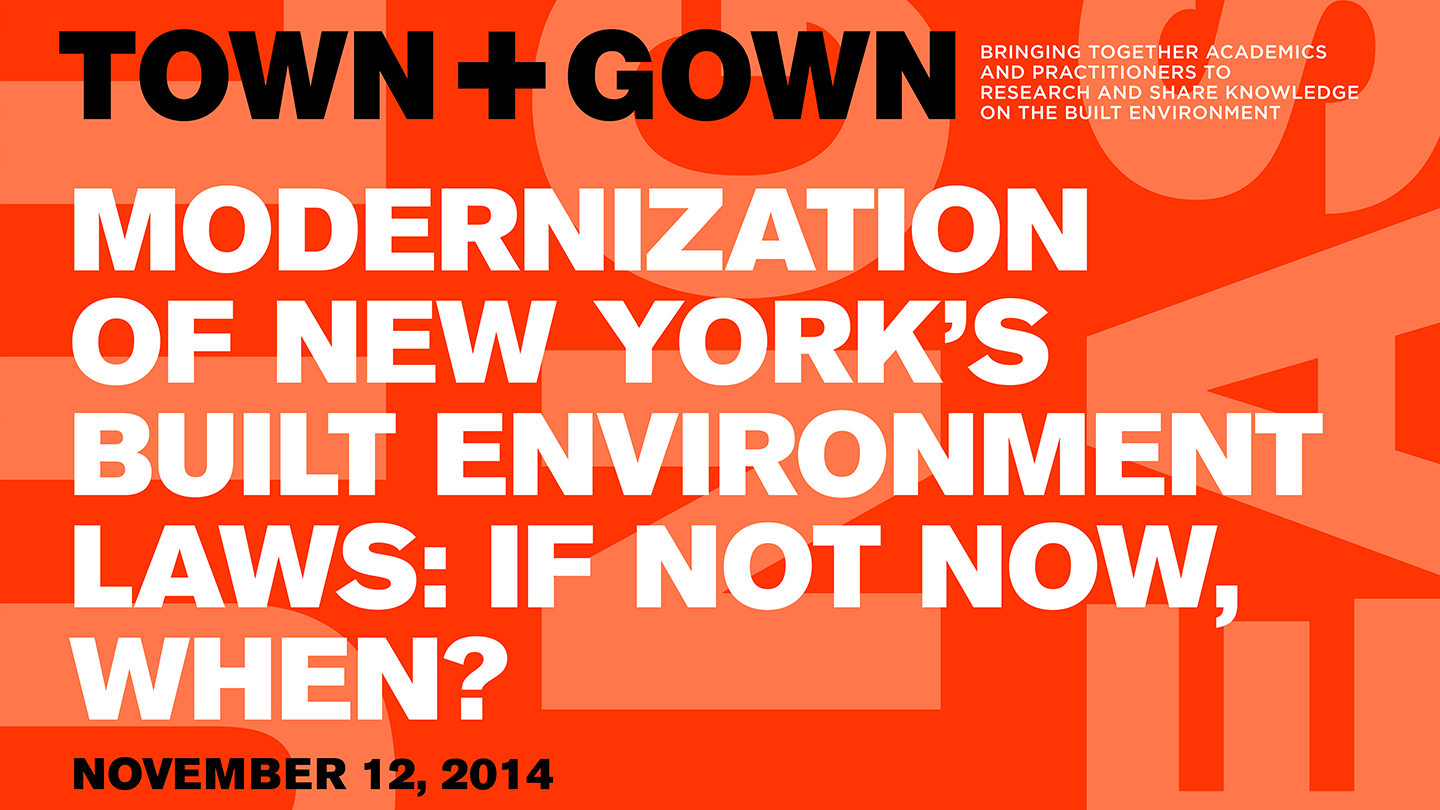
 Department of Design and Construction311
Department of Design and Construction311 Search all NYC.gov websites
Search all NYC.gov websites
November 12, 2014
Town+Gown
Service Delivery Not Procurement—At the State Law Level
In conjunction with Albany Law School, ACEC New York, AIA New York State, Citizens Budget Commission, New York Building Congress and the New York City Bar Association at Modernization of New York’s Built Environment Laws: If Not Now, When?
Town+Gown has been focusing on the tendency of referring to service delivery as procurement and/or contracting, which New York State law encourages public owners to do, to obscure thinking of ways to improve service delivery within the public owner enterprise. The purpose of this Town+Gown Symposium event, in conjunction with a larger event devoted to modernization of the State’s built environment laws, was to explore benefits that could accrue to public owners and their projects from the ability to use the full range of modern service delivery methodologies in design and construction.
In New York, one significant impediment to project-level innovation are the laws that authorize a single service delivery methodology—the segmented design-bid-build methodology with the award for construction projects going to the bidder with the lowest responsible and responsive price. New York’s public construction procurement statutory ensemble were established by the end of the first half of the last century, and despite tinkering on the margins, it remains essentially a reflection of early 20th century theory and practice. While the laws do not explicitly use the functional service delivery term “design-bid-build”, various provisions under the rubric of contracting for public works result in the design-bid-build methodology as the single authorized service delivery for the majority of the State’s public owner entities, several decades after modern delivery service methodologies developed elsewhere to meet changing project needs.
The first conversation explored the role of the built environment from an economics and public policy perspective, focusing specifically on the roles that efficient public infrastructure programs and construction markets play in local, regional and state economies. The second multi-disciplinary conversation discussed a range of specific case study projects for public owners that had the flexibility to match service delivery methodology with project needs and owner capacity and that permitted identification of the benefits of modern alternative service delivery methodologies balanced against the risks that the mandated design-bid-build methodology was intended (and is often assumed) to guard against. The last conversation explored how public construction procurement reform was accomplished many years ago in another state—Massachusetts—whose construction industry stakeholders and urban/suburban/rural composition resemble those of New York’s in important respects, identifying reform elements and process that appeared to be useful for New York to consider. Click here to see a video of the event.



